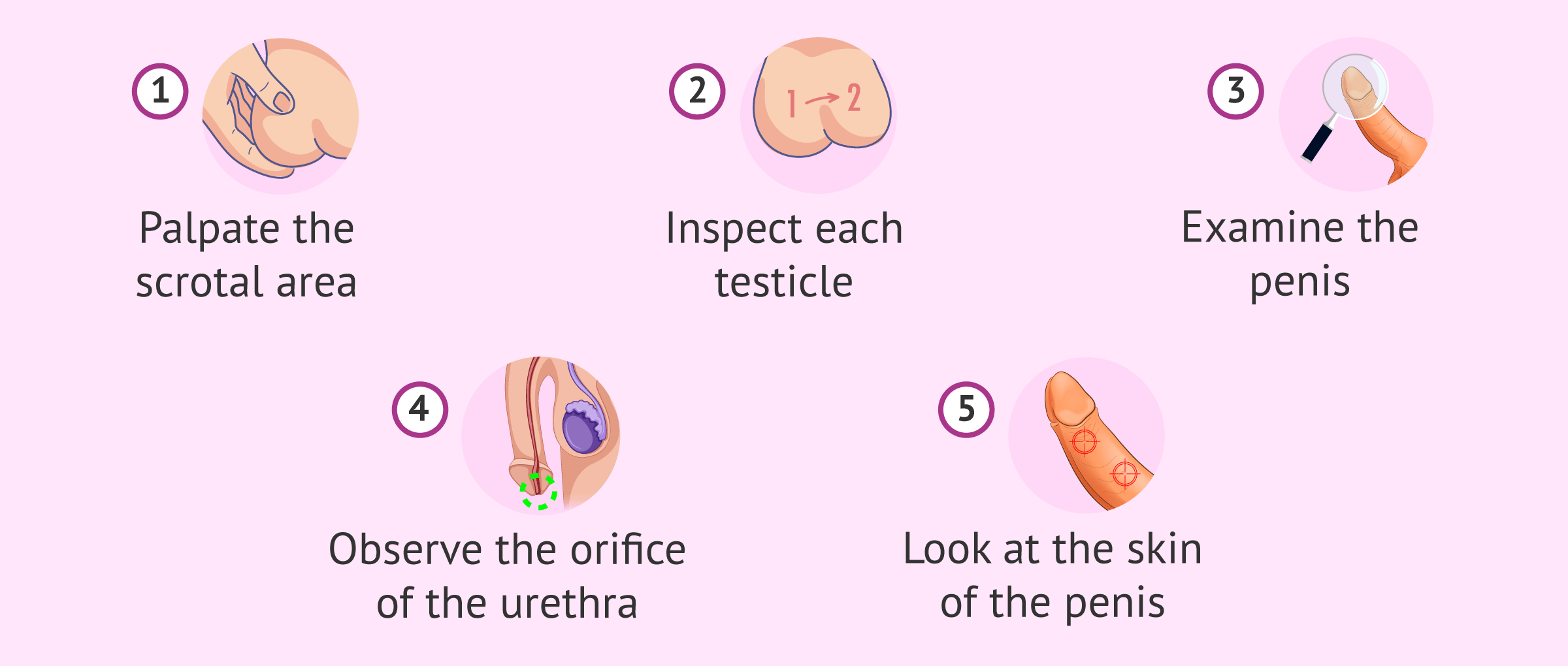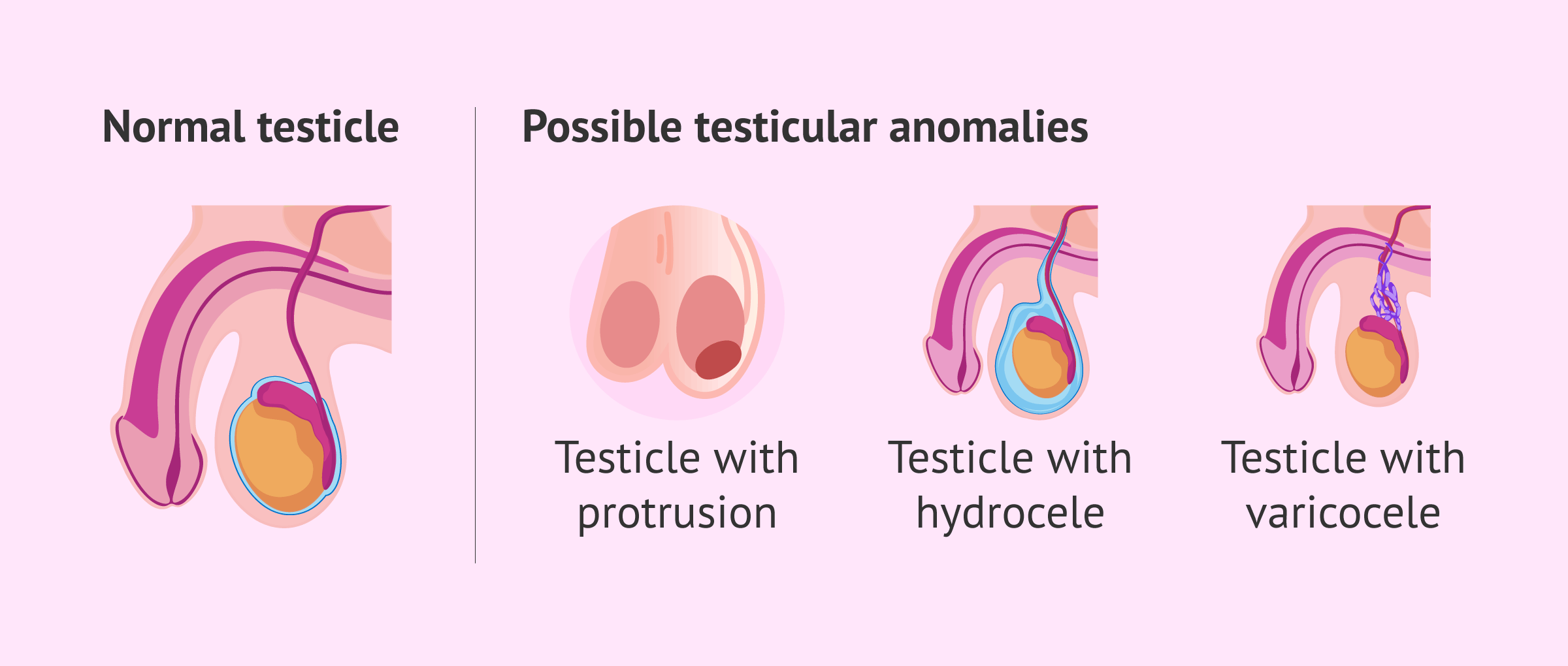Testicular cancer is the most common cancer affecting males between the ages of 15 and 35 and is characterized by its rapid progression and spread to other organs. Some men visit the doctor because they notice typical symptoms, such as the appearance of a painless lump in the testicle, or a stretching or swelling in the testicular area.
However, in many cases, men do not present symptoms or these are mistaken for those of other non-cancerous conditions. For this reason, the presence of testicular tumors often goes undetected until advanced stages of the disease.
Therefore, testicular self-examination is essential to determine whether the testicles are in a healthy state or if any changes are detected, in which case it is recommended to visit a specialist.
Provided below is an index with the 6 points we are going to expand on in this article.
- 1.
- 2.
- 2.1.
- 3.
- 3.1.
- 3.2.
- 4.
- 5.
- 6.
What is testicular self-examination?
It is a simple examination that takes at most a couple of minutes and helps detect lumps or irregularities in the scrotal sac. The best time to perform a testicular self-exam is while standing, during or just after a shower, when the skin of the scrotum is soft. Additionally, the use of hot water in the shower relaxes the scrotum and causes the testicles to descend.
Most doctors agree that performing a testicular exam is a preventive measure to detect testicular cancer early.
In fact, many recommend doing the exam once a month after puberty, especially if there are risk factors that increase the likelihood of testicular cancer, such as a previous tumor in the testicular germ cells, cryptorchidism, or family history.
How to perform a testicular self-examination?
The step-by-step process for a testicular self-exam is:
- Gently palpate the scrotal sac to locate the testicles.
- Once located, inspect each testicle carefully over the entire surface using gentle pressure with the thumb, index, and middle fingers, searching for lumps, size changes, or harder areas.
- Examine the penis. Start by retracting the foreskin to expose the glans; the skin should be smooth and shiny, with no cracks or pimples; the base groove of the glans should be clean.
- Check the urethral opening: it should not be red, and pressing it should not release any discharge.
- Observe the skin of the penis: there should be no redness, pimples, or wounds. Palpate the surface of the penis to detect lumps or pain.
Performing a testicular self-exam allows individuals to become familiar with their anatomy, so any future changes can serve as a warning.
Results of the testicular self-exam
It is important to understand that testicles have a firm consistency without being rock-hard. It is also normal for one testicle to be slightly larger than the other and for them not to hang at the same height. Keep in mind that normal testicles have blood vessels and other structures such as the epididymis, which may feel like a small lump at the top or back of the testicle.
However, if the self-exam detects a hard lump, a significant enlargement of the testicle, or any difference from the norm, it is best to consult a doctor. Most types of testicular cancer are treatable if detected early, although it’s true that many cases do not show symptoms until the tumor reaches an advanced stage.
That said, detecting an anomaly in the testicles does not always indicate possible cancer. There are other non-cancerous conditions that can cause testicular changes:
- One of the testicles cannot be located.
- Presence of a vein accumulation in the testicle (varicocele).
- Pain and swelling in the scrotal area, caused, for example, by a hydrocele.
In any case, if lumps or any testicular alteration are observed between exams, it is advisable to go directly to a urologist for a genital examination.
FAQs from users
What are the symptoms of advanced testicular cancer?
Sometimes the symptoms of testicular cancer are not easy to detect, regardless of whether it is an early stage or not.
However, some symptoms of this testicular cancer metastasis may be as follows:
- Lower back pain if there is spread to the lymph nodes..
- Difficulty breathing, coughing, or chest pain in case of pulmonary metastasis.
- Abdominal pain if there are metastases in the liver.
- Headache or confusion when the cancer spreads to the brain.

Are there any risks associated with testicular self-examination?
No. Self-examination of the testicles does not carry any risk. However, in case of detecting any abnormality in the testicles, the best thing to do is to go to a specialist, who will most likely request complementary tests to determine the cause.
Recommended reading
If you want more information about testicular cancer, we recommend visiting the following article: Testicular Cancer: Causes, Symptoms, Diagnosis & Treatment
Additionally, if you need to preserve your fertility, you may be interested in clicking here: Preservation of Fertility in Men with Cancer.
We make a great effort to provide you with the highest quality information.
🙏 Please share this article if you liked it. 💜💜 You help us continue!
References
Cenk Murat Yazici, Murat Akgul, Enes Altin, Suleyman Erol Eksi, Tugce Akdemir, Nese Dagdeviren. Does education variability change testicular cancer awareness and testicular self-examination? J Pak Med Assoc. 2021 Jun;71(6):1592-1595. doi: 10.47391/JPMA.1420 (View)
Matthias Jahnen, Lorenz Dichtl, Nora Stirenberg, Andreas Dinkel, Stefan Schiele, Helga Schulwitz, Jürgen E Gschwend, Kathleen Herkommer. Testicular and breast self-examination-a retrospective cohort study of medical students. Urologe A. 2021 Jul;60(7):901-909. doi: 10.1007/s00120-021-01479-8. Epub 2021 Mar 2 (View)
Michael Aberger, Bradley Wilson, Jeffrey M Holzbeierlein, Tomas L Griebling, Ajay K Nangia. Testicular self-examination and testicular cancer: a cost-utility analysis. Cancer Med. 2014 Dec;3(6):1629-34. doi: 10.1002/cam4.318. Epub 2014 Aug 8 (View)
Michael J Rovito, Chase Cavayero, James E Leone, Stephen Harlin. Interventions Promoting Testicular Self-Examination (TSE) Performance: A Systematic Review. Am J Mens Health. 2015 Nov;9(6):506-18. doi: 10.1177/1557988314555360 (View)
Ryan I H Chong, Jeffrey J Leow, Zhen Wei Choo, Rolando Salada, Daniel Z P Yong, Yew-Lam Chong. Testicular self-examination for early detection of testicular cancer. World J Urol. 2023 Apr;41(4):941-951. doi: 10.1007/s00345-023-04381-4 (View)
FAQs from users: 'What are the symptoms of advanced testicular cancer?' and 'Are there any risks associated with testicular self-examination?'.
Authors and contributors





